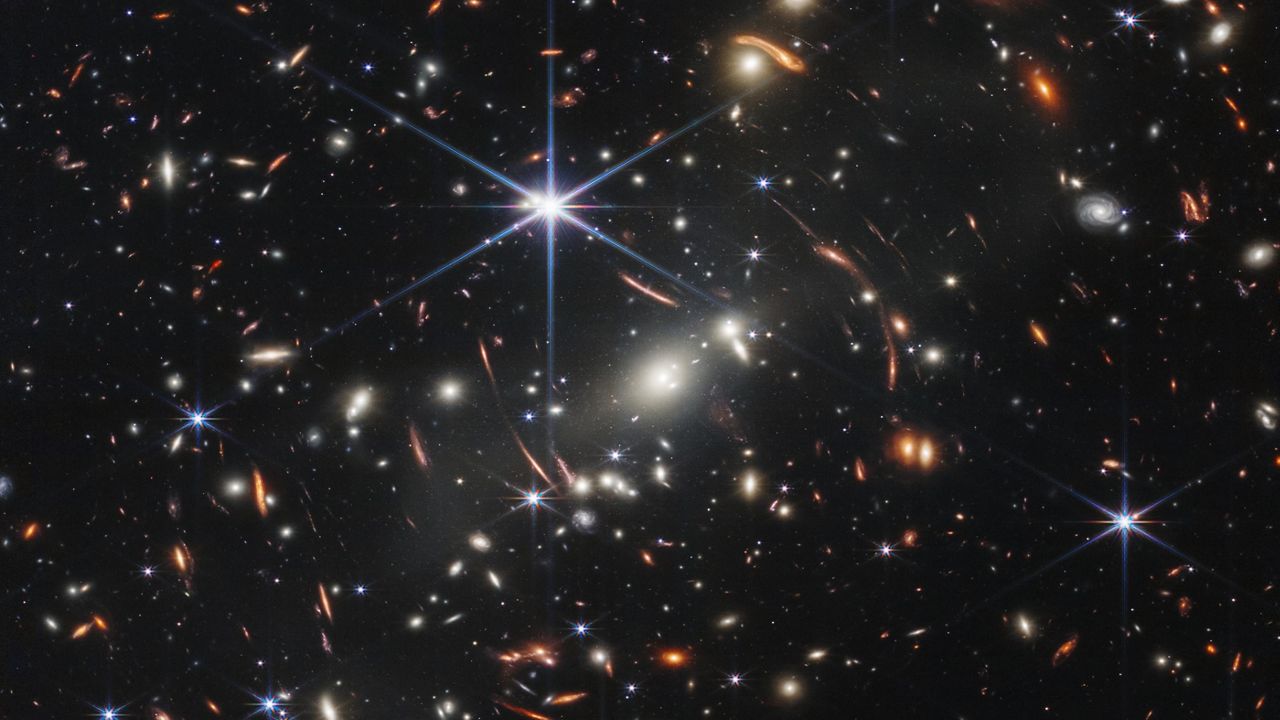The National Aeronautics and Space Agency and the White House released the first image captured by its new flagship James Webb Space Telescope Monday, a dramatic capture of an enormous cluster of galaxies first discovered 20 years ago by researchers at the University of Hawaii’s Institute of Astronomy.
An effect known as gravitational lensing causes images of galaxies behind these clusters to appear magnified and distorted. As explained in a UH release on the image, the shot of galaxy cluster SMACSJ0723 captures the view of an engineered telescope (JWST) looking through a natural telescope (the cluster) thereby producing “unprecedented magnification.”
“Observational astronomy has a way of leaving us in awe and speechless, but JWST truly ushers in a new era,” said Harald Ebeling, senior faculty at IfA and principal investigator of the Massive Cluster Survey (MACS) which identified the galaxy cluster. “All the super faint, dark-red tiny dots, as well as the much brighter, strangely shaped objects in this astounding image are extremely distant galaxies that no human eye has seen before. This is the very edge of the visible universe, brought within the reach of JWST by the gravitational amplification of SMACSJ0723. We were delighted and honored to learn that one of ‘our’ clusters was chosen to be among the very first objects to be observed with JWST.”
The IfA team was the first to tag SMACSJ0723 as a potential extremely massive cluster. The designation was later confirmed through observations performed with the European Southern Observatory 2.3 meter telescope in Chile.
Galaxy clusters are the most massive objects in the universe, held together by gravity and containing galaxies, vast amounts of dark matter and diffuse gas.
SMACSJ0723 is an estimated 7 billion light years away from Earth.
JWST is equipped with technology developed and tested at IfA and on Mauna Kea, including 16 near-infrared sensors known as HAWAII-2RGs.
Michael Tsai covers local and state politics for Spectrum News Hawaii.



